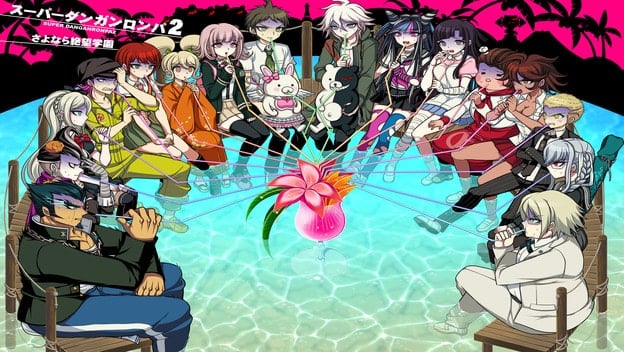Danganronpa 2 and Professor Layton vs. Phoenix Wright just released, and both of them have been doing really well both in sales and reviews. These are both two very high rated games, yet there isn’t a whole lot of game to them. Sure in Danganronpa you search for clues and try to find murderers, and in Layton vs. Wright you solve puzzles and participate in court room trials, but most of both of these games is composed of… reading. Some classify these games as visual novels while others simply say they take a lot of elements from visual novels. Either way it’s obvious that the visual novel adds something to the gaming market that we simply didn’t have before.
For those of you who are new to the visual novel scene, here is a short rundown. Visual novels are… well pretty self-explanatory. They are novels, i.e. stories, presented in a visual format. There’s still a whole lot of reading going on, but you also get to see character portraits, setting art pieces, sometimes full animations or motion comics and more.
The most basic of visual novels actually have no gameplay at all. They simply tell a story from beginning to end with some pictures in the middle. These are also very rare, however, and you’ll usually find some interactive elements inside the genre.
The most common visual novel, sadly enough, is the dating game, where you choose from a number of decisions in an attempt to win the hearts of a girl of your choice. Outside of the obvious pandering, these games are unique and interesting because they are, essentially, a multi path branching story that you control. They are a choose your own adventure where the ending is always another girl.
As the visual novel evolved, it was adapted to new genres. As visual mystery novels were made, characters were able to move around search for clues. Visual horror novels added survival horror elements, along with inventory management. Many would look at this as an evolution of the visual novel genre.
But it’s also interesting to look at this in another way. Perhaps the visual novel, as it stands now, is actually an evolution of allowing mechanics to have a story when they wouldn’t otherwise. Imagine this: you have a game with one mechanic, one mechanic that doesn’t particularly lend itself to any sort of narrative. That wouldn’t make for a very compelling game. However, one mechanic tacked on to a well written visual novel makes for a rather innovative visual novel experience.

And this is exactly what is happening! Phoenix Wright ’s main mechanics are “find the thing that sticks out” and “notice the contradiction” but together with a visual novel it makes a full game. Professor Layton is literally just a book of puzzles, but with a visual novel tacked on, suddenly we have a dashing professor fighting hallucinogenic vampires! Heck, even the fighting game is benefitting from this. Games like Persona 4 Arena and Under Night In-Birth have huge 30 hour long epic visual novels acting as their story modes, with fights taking place during the central conflicts.
The success of visual novels is proof that gamers really do want story in their games. Granted, not every game out there needs a story, I think that’s easy to admit. But think about sports games and their manager modes, or their dream player modes. Think about puzzle games like Puyo Pop and their single player modes. Think about how simple the mechanics of JRPGs are for that matter. A lot of gamers like to read, and will do so in a limited mechanical environment.
So I think it’s time to embrace the visual novel, and see what else it can do. Maybe it’s not the amount of game that a game has that determines its quality?
